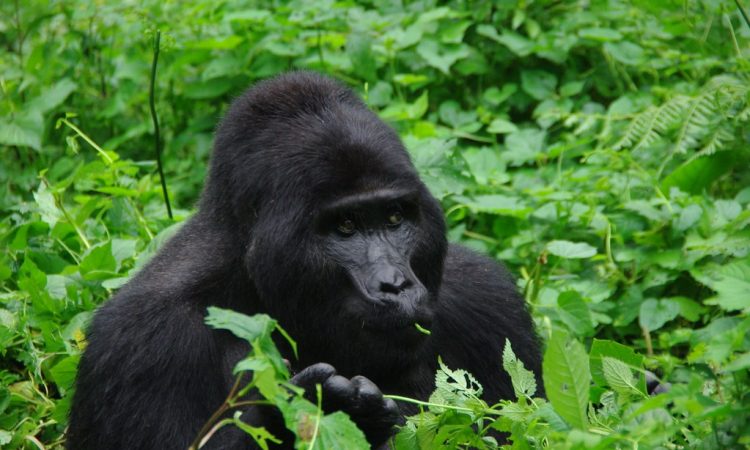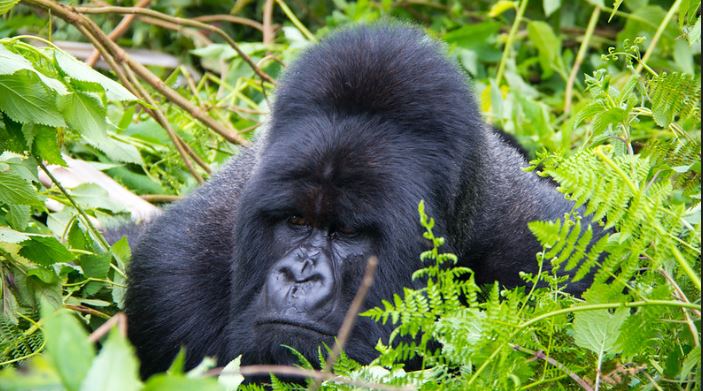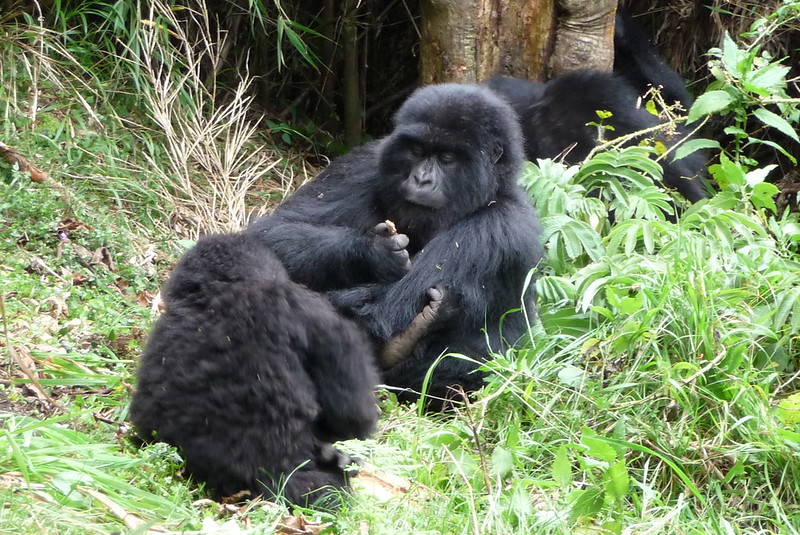When is the Best Time to go Gorilla Trekking in Uganda and Rwanda? Rwanda and Uganda are all East African countries well-known for gorilla and chimp trekking safaris. Because they are adjacent to one another, they can easily be combined into one itinerary and visited on one safari. Due to their proximity, Uganda and Rwanda have nearly identical climates, allowing them to be visited at the same time. Mountain gorillas in Uganda and Rwanda live in tropical rainforests at high altitudes, where tourism operations are heavily influenced by the weather.

Although gorilla trekking is a year-round sport in Uganda and Rwanda, the best times to visit are during the country’s two dry seasons: January to February and June to September. There is a low likelihood of rain at this time, yet you can’t entirely count it out because you’ll be traveling through a jungle. Even if it rains, it never lasts long before the blue sky opens up to reveal a bright sunny day. The only way to see gorillas in Uganda’s Bwindi Impenetrable, Mgahinga, and Rwanda’s Volcanoes National Parks is to trek through thick, misty foliage on steep, uneven, and unmarked trails. The tracks are significantly dryer and easier to navigate during the dry season than they are during the rainy season.
Gorillas spend a lot of time in the forest canopy, where they find the majority of their food.

During the rainy season, the rainforest becomes a misty, dense jungle, making hiking a struggle for photographers looking to capture those unique moments. As a result, for photographers and other safari travelers, the best time to go gorilla trekking is during the dry months, when the weather is ideal for capturing the best images.
Early morning gorilla trekking tours begin at 8:00 a.m. By 7:30 a.m., trekkers should gather at the park entrance hall to get hiking instructions from the park warden. Evenings can be chilly and rainy, especially during the rainy season. If you are sensitive to cold mornings, you should avoid going gorilla trekking during the winter months.
Some people, on the other hand, can handle the occasional downpour and go into the bush regardless of the weather. Furthermore, gorilla trekking expeditions take place every day, regardless of the weather. In addition, most gorilla lodges in Uganda and Rwanda offer low-season discounts to visitors during the rainy seasons. Below are month by month gorilla trekking in Uganda and Rwanda to help you choose the best time for you to go for your safari experience:
JANUARY
The month of January falls during the region’s brief dry season, making it ideal for gorilla trekking safari in both countries and game viewing in Uganda. The dry routes make driving the unpaved roads to the gorillas and forest strolling a breeze. Despite the fact that August is one of the warmest months of the year, gorilla trekking in the Volcanoes and Bwindi forests is pleasant due to the milder temperatures that bring the heat down from high altitudes.
The tropical weather may bring occasional rain, but it is unlikely to disrupt your gorilla experience or safari game activities. As a result, January is one of the greatest months for gorilla trekking in Uganda and Rwanda, as it falls during peak season, when the majority of tourists visit these safari vacation spots. January is also the optimum time to combine Serengeti, Ngorongoro and Masai Mara big five game drives with gorilla trekking in Uganda or Rwanda.
FEBRUARY
Despite the fact that February is part of the dry season, the number of visitors begins to decline during the month. February, like January, is the greatest month for gorilla trekking, bird watching, and going on a game drive to see the savannah animals before the March rains scatter them.
Rwanda and Uganda’s greenery will lighten as the month progresses toward the end of the dry season. As a result, wildlife will be easier to identify as they begin to congregate around the few surviving waterholes. As a result, February is the best month to visit Uganda, Masai Mara, Serengeti, and Ngorongoro for gorilla trekking and wildlife viewing safaris. It’s also calving season in the southern Serengeti, which means it’s a great time to witness predators in action.
MARCH
The commencement of a three-month low travel season and the start of the wet season in the region coincide in March. However, this does not rule out the possibility of going gorilla trekking. Although safari adventure activities in East Africa are at their peak during this month, some travelers find it to be a good time to go gorilla trekking because it is outside of the busy season, when travel costs are likely to be lower. There will be lots of availability at a variety of lodges, as well as gorilla permits, during this time.
Despite the fact that it is the rainy season, it is doubtful that it will rain for more than two hours per day before the clouds clear for cool, peaceful weather during your excursion. Traveling with waterproofing will keep you from getting soaked, and you’ll have more time to rest at your safari lodge.

MAY AND APRIL
March and April’s heavy rains have continued into May, disrupting walking expeditions. April and May are the worst months for gorilla trekking and game viewing. If you don’t mind trekking in the rain in the thick gorilla woods, though, it might be a wonderful time to explore the region’s stunning surroundings. After extended wet times, the elegantly terraced craggy hillsides will be lush and verdant, providing attractive photographic backdrops. Furthermore, gorilla permits are generally available, and you’ll find the finest hotel deals during this time.
Serengeti, Ngorongoro, Tarangire , Maasai Mara, Amboseli national park or Uganda’s savannah parks combined with gorilla trekking is an excellent mix. Because of the mild rains in the afternoon and the stunning green surroundings, game viewing is pretty easy.
JULY AND JUNE
The peak safari season in Uganda and Rwanda begins in June and lasts through September, but the months of June and July have the best weather for gorilla trekking in both countries. Most people will be able to manage the journey to find gorillas because there will be little to no rain during that period. Gorilla trekking expenses will be higher during peak season, and permits must be booked well in advance.
Unlike other African destinations, however, a safari vacation in Uganda or Rwanda during peak season is rarely crowded, allowing you to have personal, untamed interactions and amazing experiences. Excursions with gorillas are limited to no more than eight individuals per gorilla group, providing for close personal contact during your one-hour visit with the gorillas. During this period, some boutique safari lodges may fill up quickly, so book months in advance to ensure good accommodation.
June, as the first month following the rainy season, still has lush landscapes, making it a good time to visit if you wish to combine gorilla trekking with game viewing and scenic photography. The dry season, which runs from July to October, is ideal for combining gorilla trekking with big-game viewing or wildebeest migration in the Masai Mara and Serengeti.


